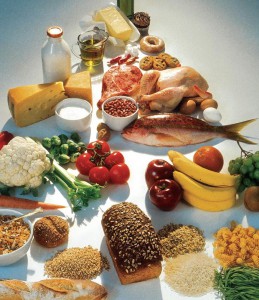Fall for Nutrition with Local Produce
 Locally-grown fruits and vegetables and fresh oysters make nutrition easy to find in Hampton Roads this fall.
Locally-grown fruits and vegetables and fresh oysters make nutrition easy to find in Hampton Roads this fall.
It’s one of the perks that come with living in a state that boasts eight oyster regions and one of the most diverse agricultural productions nationwide.
From apples and Asian pears to leafy greens and sweet potatoes, Virginia’s fall bounty offers essential vitamins and minerals to promote good health. Although many people reach for a multivitamin every day, federal health authorities recommend people should get most of their nutrients by eating a variety of healthy foods.
“A good rule of thumb when you’re planning your meal is to make sure half of your plate will be filled with foods from the produce section,” said Kelly Freno, a Registered Dietitian at Bon Secours In Motion.
It’s a recommendation Freno explains to patients during In Motion’s nutrition classes and weight loss presentations. Gone are the days when meat was the focus of the meal.
“The center of the dish is now the vegetable,” Freno said.
It’s no surprise given all the vitamins and minerals that fruits and vegetables contain. Vitamin A helps with vision and the immune system. Vitamin C is needed for wound healing and acts as an antioxidant, helping to protect cells from free radicals. Minerals – calcium, magnesium, phosphorus, potassium and iron – are important for bone, muscle and nerve health. Minerals also keep the body’s fluids in balance, Freno said.
Here’s what local residents are likely to find this fall at farmer’s markets and in the locally grown section of the grocery store:
- Tuber and root vegetables – Sweet potatoes are loaded with vitamins A and C. Turnips and beets have potassium, iron and magnesium.
- Squashes – winter, acorn, butternut and pumpkin all contain vitamin A and potassium. Pumpkins are also packed with fiber, which helps digestion, weight loss and heart health.
- Cruciferous vegetables – broccoli, brussel sprouts, cabbage, collard greens and kale have fiber, vitamins C, E, K; folate and minerals. Cruciferous vegetables also contain sulfur-containing chemicals called glucosinolates. Some of these compounds have shown anticancer effects in cells and animals, but it’s unclear if this holds true for people.
- Apples – not only do they have vitamin C and fiber but they also contain pectin to help with gastrointestinal health by promoting good gut bacteria.
September through December is also the time of the year people can harvest wild oysters, which contain zinc. The body needs zinc for tissue repair, cell reproduction and growth.
Each of Virginia’s eight oyster regions produces a distinct flavor. Salinity, creaminess and sweetness can vary.
“Fall is the best time of year to harvest wild oysters,” Freno said. “However, people with weakened immune systems should refrain from consuming raw oysters.”
Of course, many people like to eat their oysters, the way they like to eat their vegetables: cooked.
“There are always some nutrient losses from cooking,” Freno said. “Steaming and roasting are a great way to cook without losing a lot of nutrition.”
Sources: National Cancer Institute, U.S. Department of Agriculture, Virginia Department of Agriculture and Consumer Services
+ Learn more about nutrition at Bon Secours In Motion.
+ Find locally grown food in Hampton Roads.

